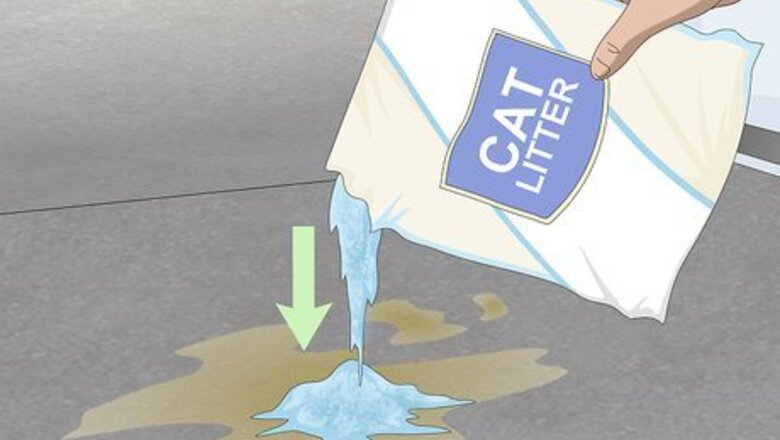
views
Sprinkling Cat Litter

Cover the area with cat box litter. Cat litter is made to be ultra-absorbent, and it can soak up a lot of the hydraulic fluid, drawing it out of the asphalt. This works best on a fresh spill, but it can be an effective first step at treating hydraulic fluid which has soaked in, as well. If you prefer, you can use another absorbent material, like sawdust or granulated clay.
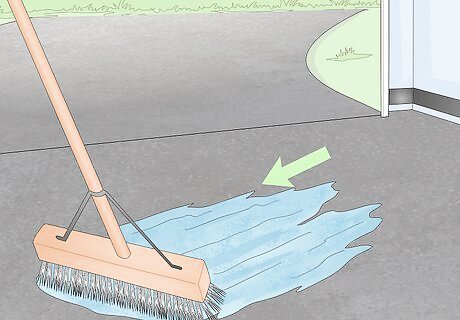
Use a push broom to spread the litter over the stain. Spread the cat litter out evenly, and try to push it down into the oil as much as you can. The smaller the granules of cat litter, the more effective it will be. For even more absorption, grind the cat litter in using the soles of your shoes

Let the cat litter sit overnight. You want to make sure to give the litter plenty of time to absorb the oil, so resist the temptation to remove it too soon. If you can't wait overnight, give it at least 4-5 hours, but the longer it sits, the better.
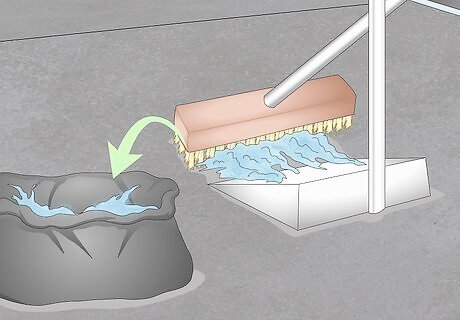
Sweep up the litter and safely dispose of it. Use a stiff-bristled broom to sweep the cat litter onto newspaper or into a dustpan, then dispose of it in a safe place where it can't harm the environment. The best method is to take it to the landfill. Never throw the used litter into your yard. When it rains, the oil will get washed out and will contaminate your groundwater.

Scrub the area with liquid detergent if there's a stain remaining. If there's a greasy spot remaining, pour liquid detergent over the area and scrub the spot with a stiff-bristled brush. Rinse the area well with hot water when you're finished. Alternatively, you could spread a thick paste made from baking soda and water over the stain and let it sit for 20 minutes, then rinse it away. If the hydraulic fluid stain is still obvious, you may need to try another removal method.
Dousing the Stain with Cola
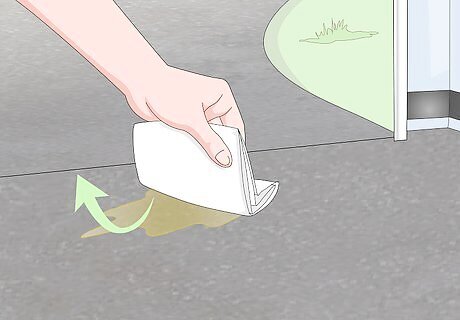
Clean up any excess oil. If the spill is fresh, you should absorb any oil from the surface of your driveway before you do anything else. You can do this with cat litter, or use absorbent pads if it's a small stain. You can also spread sawdust or granulated clay over the area to absorb the excess oil.
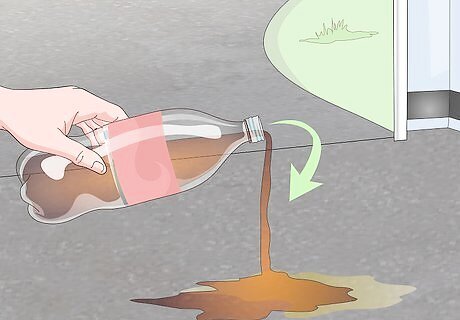
Pour a bottle of cola onto the oil spill. The carbonation in plain cola can help break up and dissolve the hydraulic fluid. In addition, the fizzing action can help force the oil molecules out of the crevices in your asphalt.

Work the cola into the area with a scrub brush or a bristle broom. You want to mix the two materials as much as possible, so really force the brush down into the asphalt, working in a circular motion. This will also help the cola fizz up more, increasing its effectiveness.
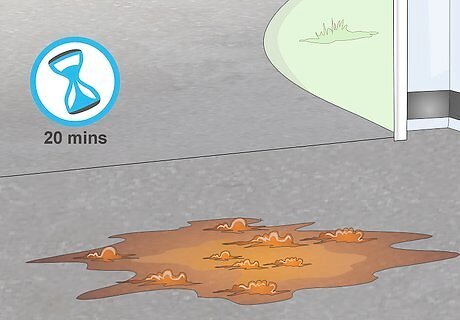
Leave the cola on for 20 minutes or until it stops fizzing. Once the cola becomes flat, it will no longer be effective. Don't let it dry, or you'll just have a new stain you have to clean up.
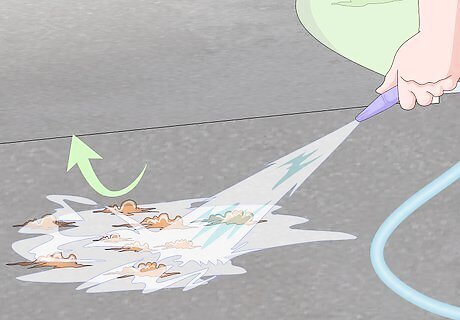
Rinse the area with water. If you have a hose with an adjustable nozzle, turn it to the highest pressure you can. Spray the area thoroughly and let it dry. If you don't have a hose, you can rinse the area by dumping water onto the stain instead.
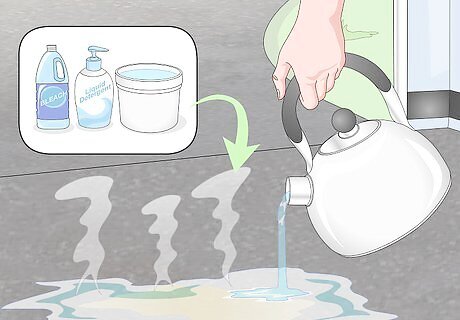
Apply bleach, detergent, and hot water to remove any stains that are left. Sometimes the cola will leave a greyish spot after you rinse it away. If it does, pour a mixture of bleach, detergent, and very hot water onto the area. Keep pouring hot water over the area until the stain is gone. Make sure the detergent you're using is ammonia-free. Mixing ammonia and bleach creates a very dangerous gas that can be harmful or fatal if inhaled.
Using Oven Cleaner
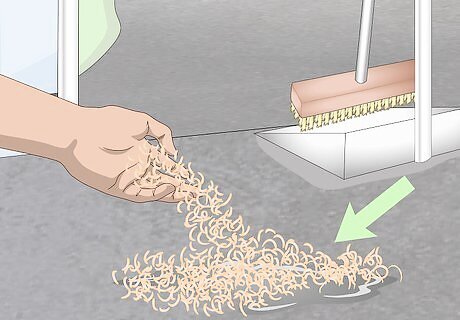
Absorb any excess oil with sawdust or cat litter. If the spill is recent, sprinkle an absorbent material like sawdust, granulated clay, or cat litter over the hydraulic fluid. This will absorb the bulk of the oil. Sweep up the oil and take it to the landfill when you're finished.
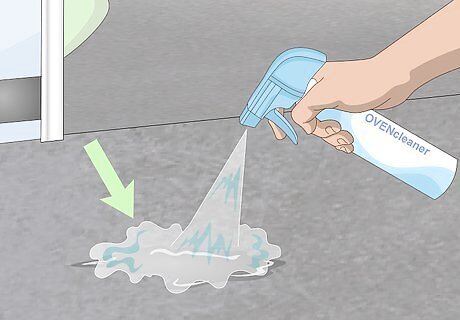
Spray the affected area with a biodegradable oven cleaner. Oven cleaner works by dissolving grease, and it's made to tackle the toughest jobs. Thoroughly saturate the hydraulic fluid stain, making sure to spray the cleaner all the way to the outside edges. Choose a biodegradable product so you don't have to worry about rinsing harmful chemicals into your lawn.

Wait for about 30 minutes. This will give the cleaner plenty of time to eat into the hydraulic fluid, dissolving the oils deep in the porous surface of your asphalt. Follow all safety directions on the packaging, including wearing protective gloves and/or a mask if it's recommended. Even though the cleaner is biodegradable, you should still keep children and pets away from the area while the product is present.

Rinse the cleaner away with water. Once the 30 minutes are up, turn the spray nozzle on your hose as high as you can and wash away the cleaner and any hydraulic fluid residue. At the very least, you should notice a dramatic improvement in the appearance of the oil stain. If you don't have a hose, pour buckets of water onto the area until you've rinsed off all of the cleaner.




















Comments
0 comment